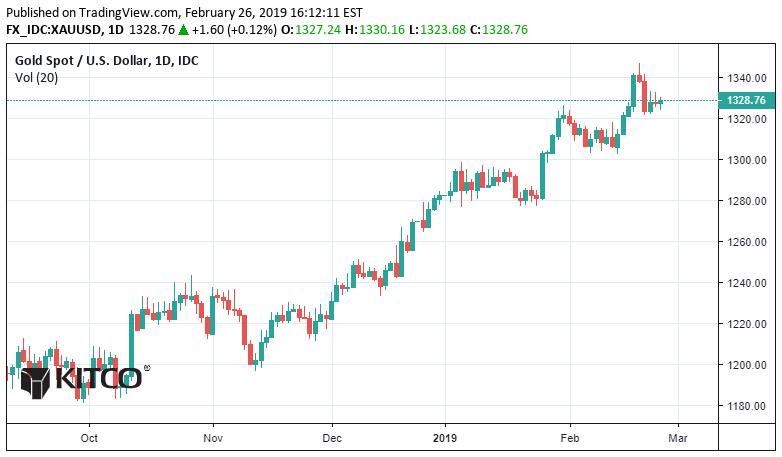Gold Remains An Attractive Inflation Hedge - JPMorgan
THANK YOU FOR POSTING A REVIEW!
Your review was sent successfully and is now waiting for our staff to publish it.
(February 26, 2019 - Neils Christensen)
(Kitco News) - Although prices pressures have dropped as growth concerns picked up, JPMorgan is warning investors not to underestimate long-term inflation risks and to look at gold for some protection.
In a report released last week, JPMorgan analyst John Normand said that Treasury Inflation-Protected Securities (TIPS) and gold remain the “most durable” hedges in an environment of rising inflation.
The comments come as inflation has fallen off the radar for most investors, who are instead focused on growing risks of an economic slowdown or even a recession.
“Despite H1 uncertainties over growth, US inflation risks through 2020 are still worth hedging given the Fed’s newish attempts to generate an inflation overshoot,” said Normand.
He added that gold is an attractive asset because higher inflation weighs on U.S. real interest rates, which undermines the U.S. dollar.
“When choosing inflation hedges for the next year or two, the source and the consequence of price pressures are key,” said Normand. “For us, these include a labor market that tightens further and pushes up core and eventually headline inflation Hence the TIPS overweight. Another is that the Fed will deliberately erode real yields to spur the economy, thus undermining the dollar versus alternative reserve currencies like Gold.”
The comments were made after gold prices pushed to a 10-month high. Although the market is off its recent highs, prices are still holding above critical support levels. April gold futures last traded at $1,330.80 an ounce, up 0.10% on the day.

Although the risks of an inflation overshoot remain relatively low, they are still among the top five risks mentioned by clients, Normand said.
“Until the January 30 Fed meeting, most considered a US inflation overshoot to be a tail risk rather than a policy objective,” he said. “The view we have been advancing for the past month is that the Fed has been slowly and subtly unveiling a regime change involving two principles: setting policy based on actual inflation rather than a forecast driven by low unemployment; and aiming for a mild overshoot of 2% core PCE to reinforce the symmetric inflation target that has been in its statement of longer-run goals since 2016."
-
Silver Remains On The Defensive Below $27.50 On Easing Middle East Tensions By
Mint State Gold
April 24 2024
-
China's Demand for Gold Is Unstoppable As Consumers, Investors, And The Central Bank Fuel A Record-Breaking Price Surge By
Mint State Gold
April 22 2024






